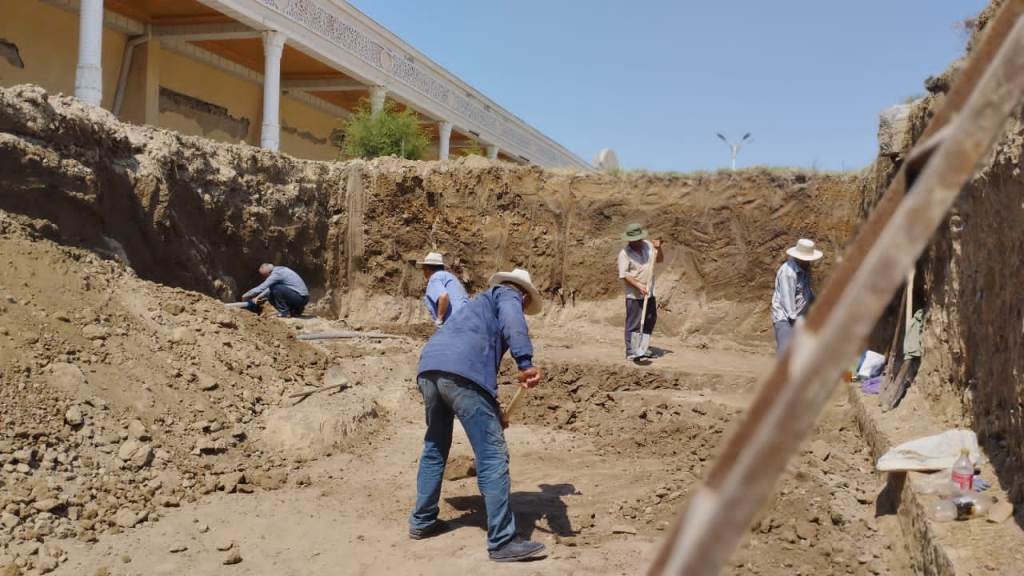As part of the 20-day archaeological excavations at the Mugh Complex (Kalai Mugh) in Istaravshan, several exhibits were discovered. On his Facebook page, the director of the state institution "Castle Complex Mug" Mirzo Olimov said that the finds belong to the Neolithic period, some date back to the Middle Ages.
Alimov noted that archaeological excavations in this complex were carried out last year, when many elements of the ancient city were discovered. This year, the excavations took place from July 19 of this year and ended on August 8.
"During the work, walls, pots and jugs of the VII-VIII centuries, exhibits from the Neolithic period, various vessels and fragments of ceramics from the Middle Ages and ancient urban planning were discovered.
There are three cultural strata in our castle Mug, and it is necessary to organize a permanent expedition here. Therefore, we should build a scientific and archaeological base as soon as possible and provide it with scientists," Mirzo Olimov wrote.
In addition, stones were found that are estimated to be more than 5,000 years old.
"They served as a tool for removing fat and oil from animal skins. It follows that people have lived here for more than 6,000 years," the expert adds.
The archaeological excavations were led by the famous archaeologist of the country Turakhon Khujageldiyev.
Recall that in September last year, the cultural transnational heritage of the Silk Road: - Zarafshan-Karakum was included in the UNESCO World Heritage List.
In addition to the Castle of Muk, the monuments of ancient Penjikent, the city of Sanjarshah, the fortresses of Hisorak, Gardani Hisor, the fortress of Qom, Tali Khamtuda, the Toksankorez irrigation system and the Tomb of Khoja Muhammad Bashoro belong to it.






